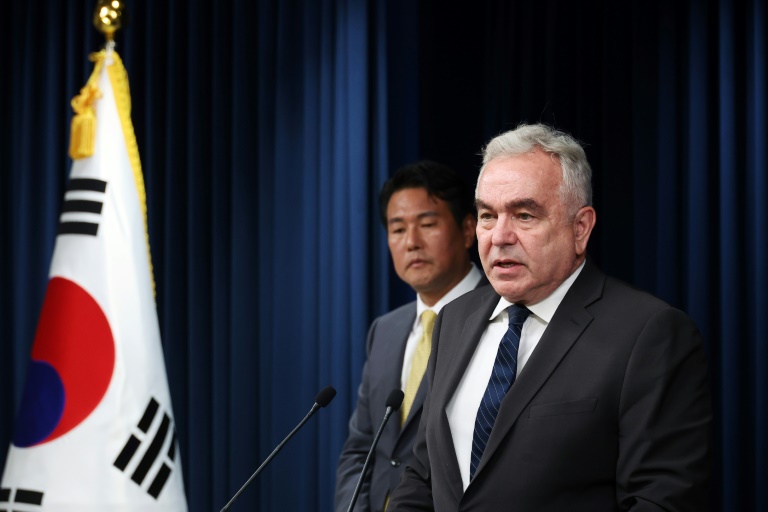SriLankan Airlines has a long history with India, especially with cities in the south. It began services as early as 1979, and has now operated in Chennai for over 44 years. In 2007, it became the first international carrier to operate 100 flights a week to India.
Despite multiple setbacks, especially those faced during the Covid-19 pandemic and the country’s economic crisis, SriLankan Airlines continues to operate in nine Indian cities, and now, has plans to expand.
This is perhaps in line with the country’s vision: in October, in an effort to boost tourism, the Sri Lankan Cabinet approved the issuing of free tourist visas to tourists from India as part of a pilot project, until March 31, 2024. India is Sri Lanka’s top source market, and Indians constituted 20% of all tourist arrivals to the island nation this year, as of September.
In a chat with The Hindu, SriLankan Airlines’ CEO, Richard Nuttall, whose experience in the airline industry spans three decades and five continents, talks about the airline’s strategy for India, the current challenges it faces and the roadmap ahead. Edited excerpts
What are your plans with relation to India?
India is the real game at the moment. We carry three different groups of passengers: the Sri Lankan traveller, whether that’s the Sri Lankan in Sri Lanka or the diaspora; we have inbound tourism to the country and then we have India, and India is a massive opportunity.
There’s three parts to the story: first of all, we are the nearest international beach destination to India. India is the biggest source of tourists for Sri Lanka at the moment, but the reality is, the number is peanuts. We get 20% more tourists from India, which has 1.4 billion people and is next door, than we do from the UK that is 11 hours flying time away: we should be getting 10 times that amount.
The second thing about India is that it is the most populous country in the world. The economy is growing fast and in broad number terms, India has half a commercial aircraft per million people. China has three; even in Sri Lanka, we have one, and the U.S. has 30. Now, the fact that we have more in Sri Lanka than India and we have no domestic market – tells you how big the opportunity in India is.
When you look at India, the big hubs in India are Mumbai and Delhi, west and north. And you have all of those huge cities that maybe have LCC (low-cost carrier) feed to near destinations, but don’t have long haul feed. Now, if you want to fly from Chennai to Australia and there’s no direct flight, do you want to fly back to Mumbai? Or do you want to go to Colombo or maybe somewhere else? The point is that we are perfectly positioned for all of those cities. We already fly to nine cities in India and we’ll add more.
And the other advantage we have is that because of cultural similarities, Sri Lankan crew tend to be much better at providing service to Indians than maybe other nationalities.
So what it means is the opportunity is huge.
What are the markets you’re targeting? You have a strong presence in south India already.
We have a strong presence in southern India. I think the most obvious next destination is Ahmedabad. [It’s a] big market, and an underserved market and a relatively wealthy market. So that’s probably the next big one. But there are other cities that we’ve flown before and other places that if we can expand the narrow-body fleet, I can see as being [big]. We were the first international airline to [do] 100 flights a week to India. Now we’re back at about 60-70 because we don’t have aircraft. But we should be back within five years. I would love to be at 200 if we could get the aircraft in to provide the connectivity. One can’t be too precise on years because it’s going to depend on how fast you can get aircraft and whether we privatize or not will make a difference, but that is the goal.
What are the segments you are looking at, with tourism being one?
Tourism to here, but the big opportunity is the connecting traffic. We can carry connecting traffic to Thailand, Malaysia, Singapore, but many of those places will have also direct flights to many cities, so we will carry that opportunistically. But the bigger opportunity is slightly longer haul. So places like Australia, Japan, the places where you are not going to have direct flights from Chennai, Cochin. And so when you’re looking at that connecting traffic, it is basically all segments on long haul. It can be people going for work. In Australia, there’s a lot of VFR (visiting friends and relatives) and student traffic. Obviously there’s tourism. And it can work both ways. It can be people from those countries who are also coming to India for business.
Tell me a little about your fleet.
With the fleet, we do have some challenges. Some of them are global challenges and some of them are a little bit to do with the country’s situation. Because we don’t have a big balance sheet and because the country doesn’t have lots of dollars, we can’t go to the market and put in an order for lots of new aircraft. So essentially what we do is that we lease used aircraft. The reality is that while we do get second-hand aircraft, our average fleet age is very much in line with global averages.
The challenges that we have with the fleet are twofold. One is that [with] a number of those aircraft, their lease finished during COVID, and we have a couple more that finished because they got to end of life. So we’re now trying to look for new aircraft or new second-hand aircraft. But if we had done this early last year when we first wanted to, there were many aircraft available at very low rates. Unfortunately with what happened in the country [economic crisis], nobody would have given us an aircraft at that time. So we’re now doing it this year. But if you look now, everybody is looking for aircraft. So globally, if you want to order a new aircraft from Boeing or Airbus or whoever, the waiting time is maybe four years or more. So the lack of aircraft and engines is a global issue.
Then we have the local issue that when there are not that many aircraft available, the lessors that know us are very happy to deal with us. But those that don’t know us, they’re saying, well, I have six airlines looking for my aircraft. Am I going to put it in Sri Lanka that’s just been through an economic [crisis] or still going through an IMF process? Or am I going to put it into somewhere that’s a mature economy in Asia or somewhere in Europe? So what it means is that it makes it harder for us to get the aircraft.
At the end of the day, we are now flying 17/18 aircraft where pre-COVID we were flying 27. In an ideal world, given where we’re located next to India, you know we should be [at] 35 now and looking to be 50 in, three or four years and maybe more.
The interesting dynamic that’s going on is obviously the country is going through an IMF process and they are looking to privatise State-owned entities, of which we are one. The first part of that process is restructuring the debt and we have a lot of debt that is nothing to do with the airline today, which is making money. But it’s a lot of debt, it’s at high interest rates. Now if we can restructure it, then we can gradually start to expand. But it will be a much slower process. If we are able to privatise and we get the right investor with not huge amounts of money in aviation terms, but reasonable pockets, then we should be able to expand hopefully much faster.
If you’re talking about connecting traffic in India, will your focus be on smaller cities?
I think we’ll have the connections everywhere, but the cities that have the biggest markets with the least service will be the ones where we do best. The reality is that we do very well to Australia now out of Delhi and Mumbai because there aren’t direct flights at the moment. Direct flights are going to come, so that will affect us on that market. So then we become, maybe the second player. So we’ll still get some market from there, maybe not quite as much, but again there are all the cities in India, and if you think of the size of India and the number of people who want to go…
(The writer was recently in Sri Lanka at the invitation of SriLankan Airlines)






